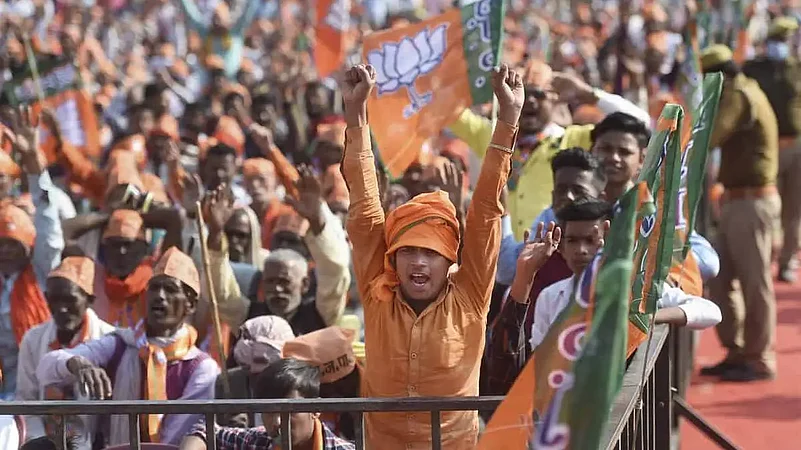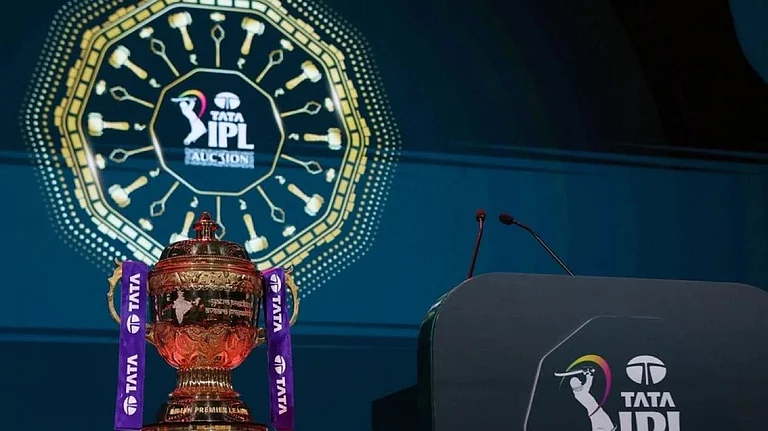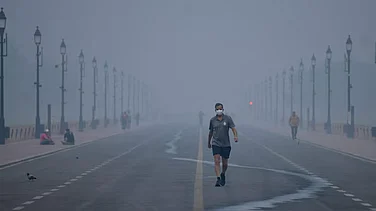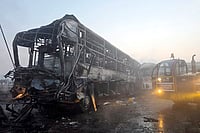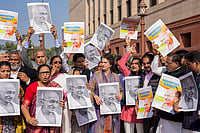Most exit polls have predicted a big win for the BJP in the 2022 UP Assembly elections, barring two (Deshbandhu and 4 PM), which have kindled hope for the Samajwadi Party chief Akhilesh Yadav-led coalition in the state, which includes Rashtriya Lok Dal and Suheldev Bharatiya Samaj Party. In the 403-member Assembly, the BJP has been projected to retain power with a good majority, but with fewer seats than the 2017 landslide (312 seats). In the Saffron citadel Gorakhpur, while CM Yogi Adityanath is almost certain to have a clear lead in the Urban area, BJP may benefit from the fragmentation among the opposition parties, their division along caste lines, and deeply ingrained polarization on the other eight seats in the Purvanchal district.
The stakes in the politically volatile state’s polls, seen as a bellwether for the 2024 General Elections, are high both for the BJP and the SP: if Yogi wins, he will be the first CM to retain power for a second consecutive term in the electoral history of UP. If Samajwadi Party chief Akhilesh Yadav comes to power, as the Deshbandhu and 4 PM exit polls have forecast, his party would break the jinx of three defeats in a row: 2014, 2017, and 2019. “The UP election is the final battle of democracy. After this, it will take a revolution to defeat the BJP,” Yadav has admitted during his campaigns. Dismissing the exit polls’ calculation that foresees the BJP forming the government under Yogi Adityanath, Yadav has said that he is confident of winning 300 seats. “The exit polls are trying to create a perception that the BJP has an edge so that even if the (EVM) thefts happen, we don’t get to know that they were stolen,” Yadav told media persons on Monday.
Yadav’s allies, SBSP chief Om Prakash Rajbhar and RLD president Jayant Chaudhary, share his optimism. At a public rally in Varanasi on March 4, days before the final phase of polling, Rajbhar said: “The departure of the BJP is imminent... At 10 am on March 10, songs that will play are ‘Mere angne mein tumhara kya kaam hai’ and ‘chal sanyasi mandir mein’.” “The BJP is fighting for its existence in this election. It has become so frustrated that for the first time in the history of the country a prime minister had to go on district-wise tours campaigning for the BJP,” added Rajbhar, who believes that the BJP will not be able to cross double-figure in eastern Uttar Pradesh. Polling was held for the 54 constituencies in the region in the seventh and last phase on Monday. RLD president Jayant Chaudhary, on the other, responded to the exit polls results through a tweet: “Exit poll kya karenge jab vote koko le gayi? (What will exit poll do when the votes have been taken by koko?).” Chaudhary’s tweet was in reference to Bharatiya Kisan Union national spokesperson Rakesh Singh Tikait’s statement to the media during the first phase of elections, in which he took a dig at the BJP. It had amused a lot of people, making them look up the meaning of ‘koko’, a hawk-like bird. Elders in Uttar Pradesh evoke ‘koko’ to lie to children that the things they take away from them are actually taken away by the bird.
After its alliance with the Congress and the BSP failed to do the trick in previous elections, the SP has tried to expand its traditional Muslim-Yadav vote bank by reaching out to non-Yadav OBCs like Rajbhars and Nishads, and also by choosing RLD as an ally, since anger among farmers is going to be decisive in this election. However, the non-Yadav OBCS, especially Nishads (Sanjay Nishad of the Nishad Party is a BJP ally now) stand divided across the state, including in Gorakhpur, where 109 candidates are in the fray in the nine constituencies. For instance, in Campierganj, where the Nishads form one third (nearly 30 percent) of the electorate, all the three challengers of the sitting BJP MLA, Fateh Bahadur Singh, are Nishads: Kajal Nishad (SP), Chandra Prakash Nishad (BSP), and Surendra Kumar Nishad (Congress). While Kajal Nishad has put up a strong fight, the votes of the community are likely to get split among its three leaders. If the BJP’s votes remain consolidated, Fateh Bahadur can become the MLA for the seventh term. The Singhs and Chauhans in the constituency, who form BJP’s core voters in the area, (this reporter spoke to them when he was touring Gorakhpur in mid-February) remain firm in their support to the saffron party. Rahul Chauhan, 26, who lives in Jungle Kauria and works as a painter, says only Yadavs will vote for the SP. The slogan, ‘Jo Ramko Layen Hain, Hum Unko Layenge,’ has resonated with him. “As long as Yogi ji and Modi ji are there, all Hindus are safe. The Muslims need to be shown their place and only the BJP can do that. Look at what happened in Karnataka school! Today, they are fighting over hijab. Tomorrow, they may well ask for a mosque inside schools,” he says, to loud cheers from his friends who surround him. In 2017, Fateh Bahadur Singh had defeated Chinta Yadav of the Congress by a margin of 32,854 votes.
In the Nishad-dominated Pipraich, 19 km away from the main city, Amrendra Nishad of the SP may seem to have an upper hand against sitting MLA Mahendra Pal Singh, but people in most of the villages this reporter visited said they will vote for the BJP. While some of them spoke out of fear, afraid of reprisal by the saffron supporters if the BJP candidate won, the launch of a new sugar mill in Pipraich with an aim to placate the farmers, may turn the tide in the party’s favour. In the reserved Basgaon constituency, the victory of an OBC candidate, BJP’s Vimlesh Paswan, against BSP’s Dharmendra Kumar in 2017 symbolised the section’s growing disenchantment with Mayawati. In the BJP stronghold, 283 km from Lucknow, Paswan has a strong base, which may help him in the final countdown. In the all-Brahmin fight of Chillupar, Vaishyas, Pasis, Nishads, Yadavs and Muslims hold the key. It’s a constituency where Congress has won four times and BSP three times since the 1977 elections. But since the BJP votes are likely to remain undivided, this reporter will not be surprised if Rajesh Tripathi of the BJP trumps the unfavourable caste equation: his opponents, SP’s Vinay Tiwari and Sonia Shukla of the Congress come from the upper caste.
Eyeing the statewide target of 300-plus seats, the BJP looks to repeat its 2017 performance in Gorakhpur district, when it had won 8 seats. Analysing the nine seats in the constituency leaves one with the sense that the party will not be too way off the mark, even though its margins will shrink. It’s largely because voters have been polarised, in some constituencies irrevocably. A youth in Pipraich told this reporter, “Naukri nahin hai to iske liye Yogiji zimmedar nahin hain. Jinko naukri nahin mil rahi woh shayad yogya hi nahin hain. (If there are no jobs, it’s not Yogi who is to be blamed. Perhaps those who are not getting jobs are not qualified enough).” This particular youth is a graduate with no job. He drives an auto for a living. But his family is a labarthi (beneficiary) of the government’s welfare schemes. There is another section of youth in Gorakhpur, however, who have resigned themselves to a political climate where religion supersedes everything. “Democracy is a modern concept. But our society continues to be traditional, where issues of caste and religion remain dominant. I don’t see the real issues of price rise and unemployment trumping religion issue anytime soon. Not at least in UP,” says Rajkumar Sahni, an engineer, who works in the electricity department. “It’s not my real name. If I tell you my real name, they might come for me,” he says.






